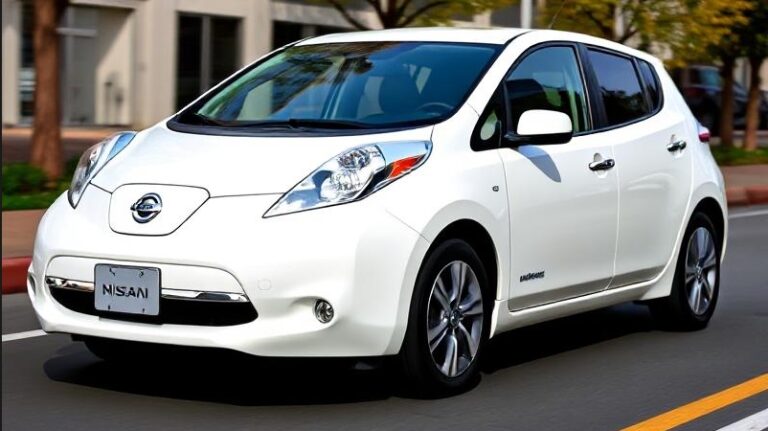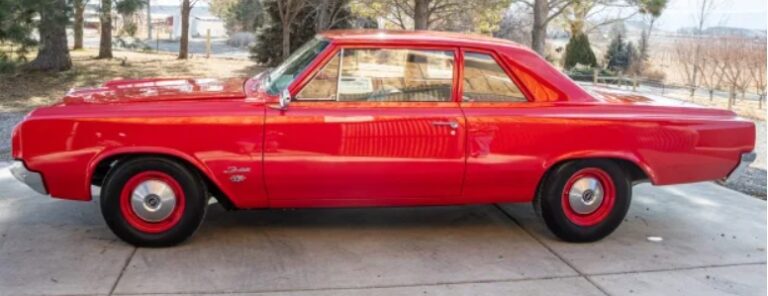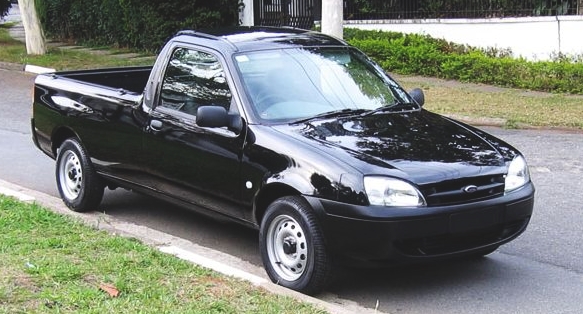The Unsung Hero: Charting the Evolution of the Kia Spectra
In the pantheon of automotive history, some cars are celebrated as legends, while others quietly perform the crucial work of building a brand’s reputation. The Kia Spectra falls firmly into the latter category. It was never the fastest, the most luxurious, or the most technologically advanced car in its class. Yet, for nearly a decade, it served as the critical bridge connecting Kia’s budget-focused past to its design-driven, world-contending present. The evolution of the Spectra is not just the story of a car; it’s the story of a company learning, improving, and ultimately, transforming public perception one reliable, value-packed vehicle at a time.
First Generation (2000-2004): A New Name for a Familiar Face
To understand the first-generation Kia Spectra, one must first understand its predecessor, the Kia Sephia. When Kia entered the U.S. market in the mid-1990s, the Sephia was its compact sedan offering. By the turn of the millennium, the Sephia was due for a significant update. Rather than a complete redesign, Kia opted for a heavy facelift of the second-generation Sephia and gave it a new name: the Spectra.
Production Years: 2000-2004
The first Spectra officially debuted for the 2000 model year. While it shared its underlying platform and core structure with the outgoing Sephia, its exterior styling was softened and modernized with a new grille, reshaped headlights, and updated taillights to give it a more contemporary, albeit still conservative, look.
Models and Trim Levels:
The first-generation Spectra was offered in two distinct body styles: a traditional four-door sedan and a versatile five-door hatchback, which was introduced for the 2002 model year and marketed as a sportier alternative.
- Spectra Sedan (2000-2004): The sedan was the volume seller, aimed squarely at budget-conscious buyers seeking basic, dependable transportation.
- Base: The entry-level model was spartan. Standard features were minimal, often including manual windows and locks, 14-inch steel wheels, and a simple AM/FM stereo. Air conditioning was typically an optional extra.
- LS (or GSX in some years): This mid-tier trim represented a significant step up in comfort and convenience, making it the more popular choice. It added features like air conditioning, power windows and locks, a cassette player (later a CD player), and often a rear spoiler for a touch of style.
- Spectra5 Hatchback (2002-2004): To broaden the Spectra’s appeal, Kia introduced the five-door hatchback. It was marketed with a more youthful and European flair. It generally came in a single, well-equipped trim level that bundled many of the features from the LS sedan, along with sportier cloth upholstery and sometimes unique alloy wheels.
Powertrain and Mid-Cycle Refresh:
Initially, the 2000-2001 Spectra models were powered by a 1.8-liter DOHC four-cylinder engine derived from a Mazda design, producing a modest 125 horsepower. It was paired with either a standard 5-speed manual transmission or an optional 4-speed automatic.
A key update arrived for the 2002 model year. Along with minor cosmetic tweaks, the 1.8-liter engine was replaced by a more capable 2.0-liter “Beta II” DOHC four-cylinder engine sourced from parent company Hyundai. This new engine increased output to 138 horsepower and 133 lb-ft of torque, providing a welcome boost in performance and refinement.
The first-generation Spectra’s primary selling point was not its performance or its features, but its unbeatable value proposition, headlined by Kia’s revolutionary 10-year/100,000-mile powertrain warranty. This warranty gave buyers peace of mind and demonstrated Kia’s growing confidence in its manufacturing quality. While critics noted its unrefined ride, noisy cabin, and inexpensive interior plastics, the Spectra successfully fulfilled its mission: to provide affordable, reliable transportation and get customers into Kia showrooms.
.
THIS is GOOD stuff if your car is in need:

.
Second Generation (2004.5-2009): A Quantum Leap Forward
If the first generation was a tentative step, the second generation was a confident stride. Debuting in mid-2004 as a 2004.5 model, the new Spectra was a complete, ground-up redesign. It was no longer a re-skinned Sephia but a new vehicle built on a modern platform shared with the highly-regarded Hyundai Elantra. This new foundation brought with it a dramatic improvement in every conceivable metric: ride quality, handling, interior space, safety, and overall refinement.
The styling was a significant departure from the blandness of its predecessor. With clean, crisp lines, a more substantial presence, and better proportions, the second-generation Spectra looked like a serious competitor to the Japanese mainstays like the Honda Civic and Toyota Corolla.
Production Years: 2004.5-2009
This generation cemented the Spectra’s place as a legitimate contender in the fiercely competitive compact segment.
Models and Trim Levels:
Kia expanded and clarified the Spectra’s trim structure for its second act, offering distinct personalities for different buyers. The sedan was the core of the lineup, while the hatchback, now officially named the Spectra5, carved out its niche as the enthusiast’s choice.
- Spectra Sedan (2004.5-2009):
- LX: The new base model, the LX was far better equipped than the previous generation’s entry-level offering. Standard features included a CD stereo, a height-adjustable driver’s seat, and a full complement of six airbags (dual front, front-seat side, and full-length side curtain), which was a major safety advancement for a car in this price class.
- EX: As the volume trim, the EX added the features most buyers wanted. This included air conditioning, power windows, power locks with keyless entry, power mirrors, and 15-inch alloy wheels. It was the well-rounded, sensible choice of the lineup.
- SX: Introduced to inject a dose of sportiness into the sedan, the SX trim was a game-changer for the Spectra’s image. It was distinguished by a sport-tuned suspension with firmer springs and dampers, 16-inch alloy wheels, fog lights, a unique black mesh grille, a rear spoiler, and sport cloth seats with red stitching. A leather-wrapped steering wheel and metal-finish interior trim completed the athletic feel.
- Spectra5 Hatchback (2005-2009): Arriving shortly after the sedan, the Spectra5 was marketed as a standalone sporty model. It came in a single, well-equipped trim that was mechanically and aesthetically similar to the SX sedan. Its key differentiators included the versatile five-door hatchback design and a standard front strut-tower brace, which stiffened the chassis for improved handling response. It was aimed directly at buyers who might otherwise consider a Mazda3 or Ford Focus hatchback.
Powertrain and Mid-Cycle Refresh:
All second-generation Spectra models were powered by the same 2.0-liter DOHC four-cylinder engine from the previous generation, but now with the addition of Continuously Variable Valve Timing (CVVT). This technology helped optimize performance and fuel efficiency, resulting in a rating of 138 horsepower and 136 lb-ft of torque. The standard transmission remained a 5-speed manual, with a 4-speed automatic available as an option.
For the 2007 model year, the Spectra received a cosmetic refresh. The front end was updated with a new grille, redesigned bumper, and more aggressive, projector-style headlights. The rear of the sedan featured revised taillights, keeping the car visually fresh for the remainder of its production run.
This generation of the Spectra was lauded by critics and consumers alike. It was praised for its comfortable and quiet ride, spacious interior, vast improvement in material quality, and comprehensive safety features. It was no longer just a “good car for the money”; it was simply a good car, period.
The End of an Era and a Lasting Legacy
After a successful run, production of the Kia Spectra ceased in 2009. For the 2010 model year, it was replaced by its stylish and dynamic successor, the Kia Forte. The Forte represented the next phase of Kia’s evolution, bringing with it the signature “Tiger Nose” grille and a level of design and technology that would have been unimaginable just a decade earlier.
The Kia Spectra, however, should not be forgotten. It was the crucial workhorse that carried the brand through its awkward teenage years into young adulthood. The first generation established the formula of incredible value backed by an industry-leading warranty. The second generation proved that Kia could engineer and build a car that could compete on quality, safety, and refinement with the best in the world.
The Spectra may not command the same nostalgia as other cars from its era, but its impact on the Kia brand is undeniable. It was the unsung hero that laid the foundation of trust and quality, allowing the Fortes, Optimas, and Tellurides of today to shine. It was the car that quietly convinced hundreds of thousands of buyers to give a burgeoning Korean brand a chance, and in doing so, helped shape the automotive landscape we know today.







